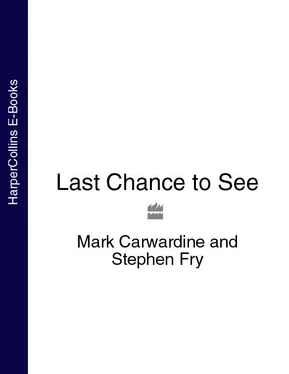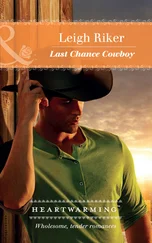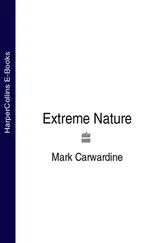‘I must confess I’m quite nervous about this whole enterprise,’ admitted Stephen. ‘I like my creature comforts rather more than I like my creatures.’
But there was method in our madness. We’d decided to retrace the steps I had taken exactly twenty years earlier with a mutual friend – the late Douglas Adams, who very sadly died in May 2001.
In 1985, the Observer Colour Magazine agreed to send Douglas, a comedy writer better known for The Hitch Hiker’s Guide to the Galaxy , to an otherworldly island in the middle of the Indian Ocean to look for an endangered nocturnal lemur called an aye-aye (exactly the kind of weird and wonderful creature that a writer of humorous science fiction might concoct on a really creative day).
It was a ground-breaking idea. Bear in mind that this was in the good old days, when endangered species and orphaned children could leave their dens or houses in complete safety, without having to pose next to D-list celebrities with falling ratings and crocodile tears. The aye-aye had never met a celebrity before, let alone one of Douglas’s stature (in both senses of the word).
Douglas’s mission was to report on conservation efforts in Madagascar, in his own inimitable style, by taking a unique and imaginative look at some of the wild animals and even wilder people that professional zoologists tend to take for granted. As he explained at the time: ‘My role, and one for which I was entirely qualified, was to be an extremely ignorant non-zoologist to whom everything that happened would come as a complete surprise.’ My own role, basically, was to arrange plenty of wildlife encounters, help him identify what he was looking at and make sure he came back alive.
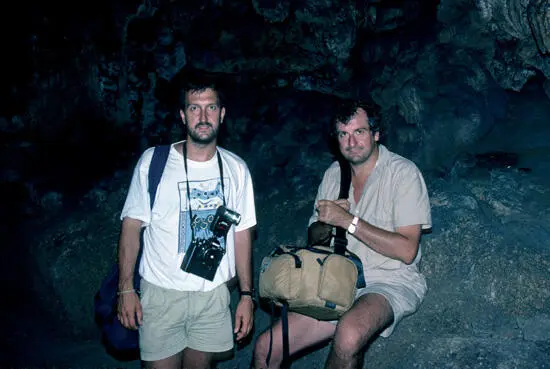
Mark and Douglas in Robinson Crusoe’s cave in the Juan Fernandez Islands, off the coast of Chile.
We met for the very first time at the airport in Madagascar’s capital, Antananarivo, and spent three hilarious and thought-provoking weeks bumbling through Malagasy jungles and red tape. Against all the odds we came face to face with an aye-aye, undeniably the strangest animal either of us had ever seen, for a fleeting few seconds near the end of the trip.
The best way to tell if you get on with someone is to be thrown together for a couple of hard weeks’ travelling and spend night after night sleeping on a wet concrete floor in the middle of a jungle. We found that we got on extremely well. In fact, we enjoyed the experience so much that we hatched a rather ambitious plan to do it all over again, half a dozen times. We put a big map of the world on a wall, Douglas stuck a pin in everywhere he fancied going, I stuck a pin in where some of the most endangered animals were, and we made a journey out of every place that had two pins.
Three years later we set off.
Actually, to be fair, it wasn’t quite that simple. Arranging all those long-haul trips to remote corners of the globe in the days before adventure travel became as normal as a £4 gallon of petrol, and long before anyone had even heard of email, deserves more than a merry ‘so we set off’. Let me rephrase it. Instead of ‘three years later’ please read ‘after hundreds of unbearably slow clank-clank-clanking telexes, dozens of typewriter-and-Tippex-written letters (most of which never arrived), goodness knows how many barely audible, pre-booked, long-distance phone calls, and thousands of grey hairs later’ … we set off in search of more endangered species.
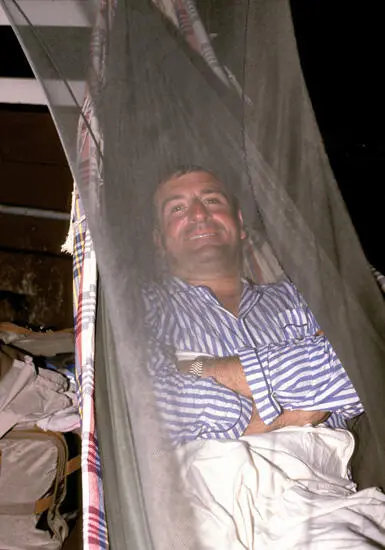
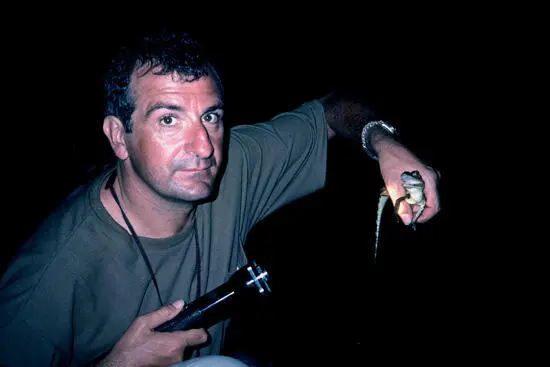
Intrepid adventurer Douglas in the Amazon.
Eventually, everything was in place: the schedules were set, naturalists the world over were ready and waiting, our passports were stamped with a mind-boggling array of visas, and multitudinous flights, boats and hotels were booked.
Then Douglas called to announce that he hadn’t quite finished his latest novel, and would I mind doing it all over again?
I did do it all over again and, eventually, we had lots of life-changing, awe-inspiring and hair-raising experiences, presented a radio series, wrote a book about our adventures (called Last Chance to See ) and became firm friends in the process.
Now history has repeated itself. It’s the same pins in the map, but this time it is Stephen who has been sleeping in the middle of jungles and sharing life-changing, awe-inspiring and hair-raising experiences to find out how all those wild animals – and their protectors – have got along in the years in between.
This is our story.
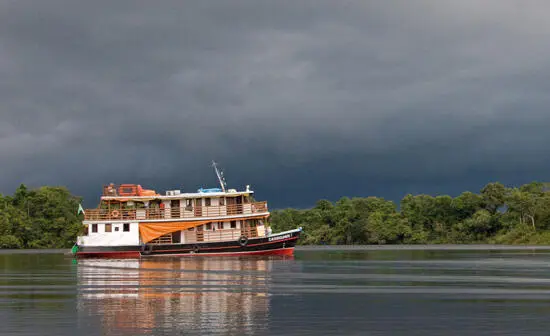
Конец ознакомительного фрагмента.
Текст предоставлен ООО «ЛитРес».
Прочитайте эту книгу целиком, купив полную легальную версию на ЛитРес.
Безопасно оплатить книгу можно банковской картой Visa, MasterCard, Maestro, со счета мобильного телефона, с платежного терминала, в салоне МТС или Связной, через PayPal, WebMoney, Яндекс.Деньги, QIWI Кошелек, бонусными картами или другим удобным Вам способом.
